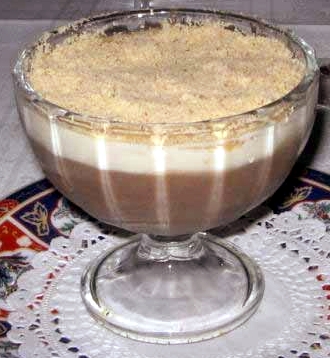Facts About Assidat Zgougou
Assidat Zgougou is a cherished Tunisian dessert, especially popular during the Mūled festival. This sweet treat has its roots in a traditional recipe that originally combined honey, smen (a type of clarified butter), and semolina. Over time, a variation known as "εasida turki" has also emerged.
The dessert features two main layers. The bottom layer is made from the seeds of Aleppo pines, known locally as "zgougou." These seeds are ground and mixed with wheat flour, starch, and sometimes concentrated milk. This mixture is cooked slowly, with powdered sugar added gradually until it turns a grayish-brown color. Once ready, it is poured into a serving bowl.
The top layer is a creamy, white blend of milk, starch, sugar, eggs, and a hint of orange blossom essence. This creamy layer is then poured over the zgougou base. To finish, the dessert is beautifully garnished with almonds, seeds, nuts, and candy, creating an eye-catching and delicious topping.
Assidat Zgougou can also be made with other nuts like hazelnuts, chestnuts, or pistachios. If different nuts are used, the dessert is named accordingly.
During the Mūled celebration, it is a tradition for Tunisians to exchange bowls of Assidat Zgougou with their neighbors and family members. The dessert is not only about the taste but also the artistic decoration. Various seeds and nuts, both ground and whole, are used to create intricate designs and vibrant colors, making each bowl a unique piece of edible art.

 Algeria
Algeria